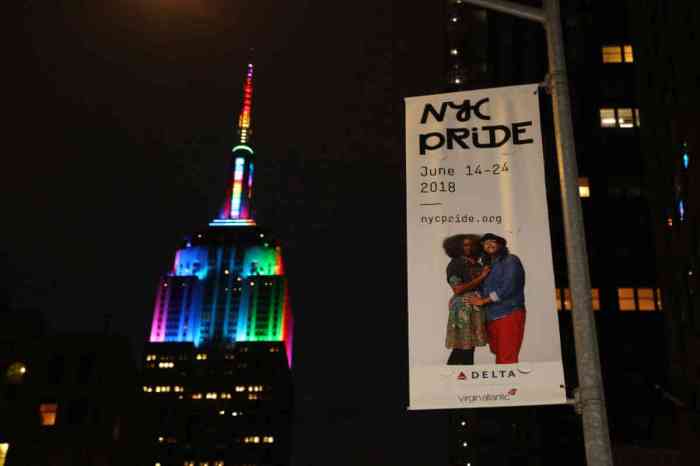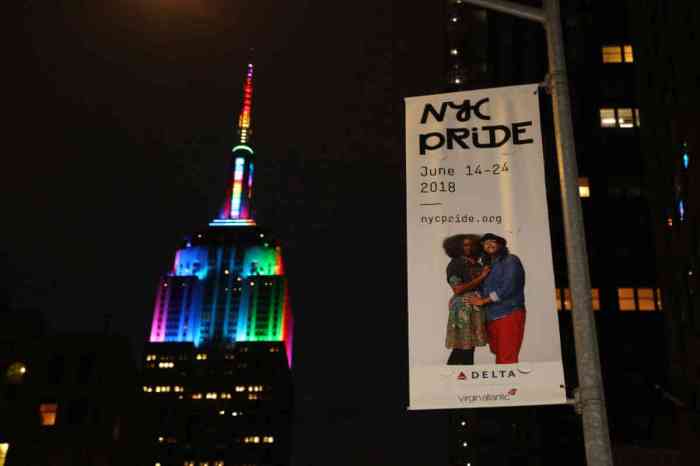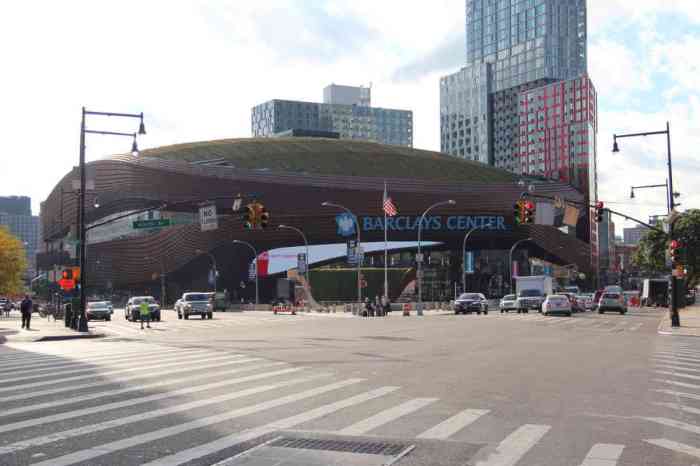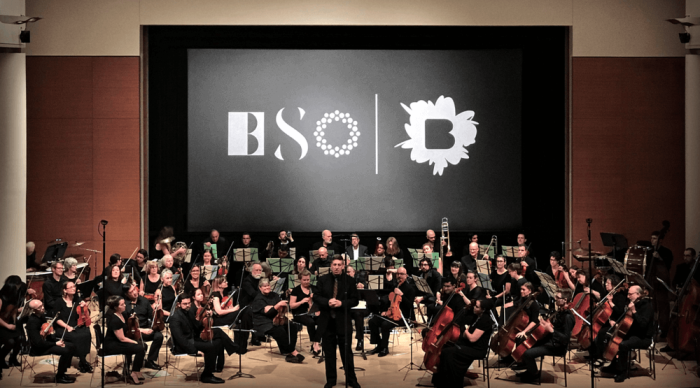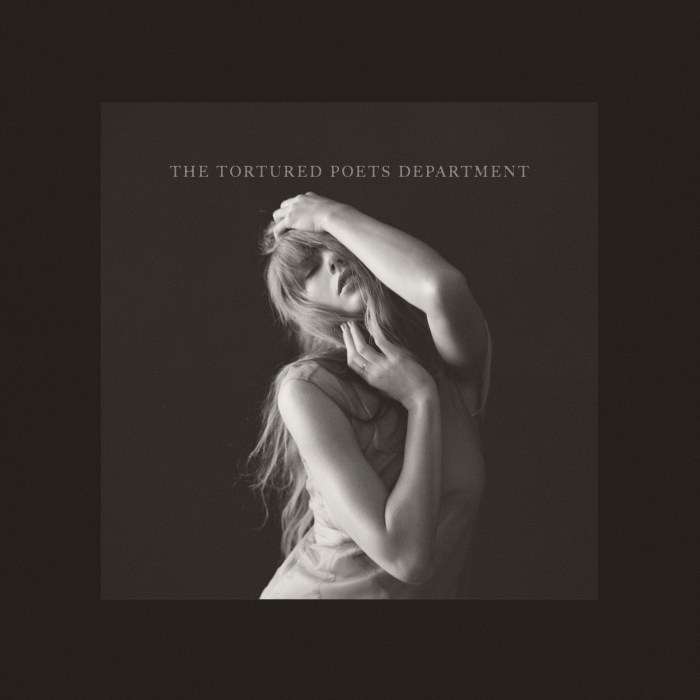As Hoods4Justice protesters carried a banner reading, “No Queer Friendly Cops” down Fifth Avenue, they were widely cheered, yet when a dozen of them brought the parade to a halt, blockading a series of law enforcement contingents, the street was on the side of the police, not the disruptors. | DONNA ACETO
As 12 members of Hoods- 4Justice were marched off Christopher Street in handcuffs after blockading the street during the June 25 Pride Parade, the crowd on the sidewalk booed. Asked if they were booing the police for making the arrests or the protesters who halted the parade, people on the sidewalk were very clear that it was the protesters who were the target of their anger.
“All these guys are not the problem,” said Chris Laro, who described himself as a Vermont ex-hippie, referring to the police. “It’s not that it’s not a vital issue, but today’s not the time.”
Hoods4Justice, which did not register for the parade, jumped into the line of march in front of the 18 groups that had secured a leading spot from the event’s organizer, Heritage of Pride (HOP), to give voice to resistance to the Trump administration. Downtown, at the east end of Christopher Street, the interlopers allowed the resistance contingent to pass them by and then carefully timed their move back onto the street so that they stopped the parade in front of the NYPD’s marching band, which was leading the Gay Officers Action League (GOAL), a contingent from the Toronto police department, and groups from the city’s corrections and fire departments.
Demands to bar police, corporations from Pride mount across US, but no clear verdict from street crowds
Hoods4Justice was protesting the presence of police and corporations in the parade, and the effort by police to end the group’s blockade took roughly half an hour.
Just to make the mood within the crowd of spectators absolutely clear, after the protesters were removed from Christopher Street, the cheering for the police groups that then passed by was deafening.
HOP was not the only such organization to deal with protests over police and corporate contingents in Pride Parades this year. There were similar protests in Chicago, Minneapolis, and the nation’s capital. In Toronto in 2016, a Black Lives Matter group mounted a protest over police in that city’s Pride Parade, and police in uniform were banned from that event this year. GOAL invited Toronto’s LGBTQ police group to march in uniform in New York City’s parade this year.
What remains unclear is how much support these protests have from the wider community. The action in Toronto won an effective police ban in this year’s march, but in Minneapolis, Twin Cities Pride initially barred police from this year’s march then reversed its decision in less than 24 hours. The debates over the protests on social media have been lively.
And Hoods4Justice was cheered as it marched along Fifth Avenue from 41st Street to Christopher Street carrying banners that read “There Are No Queer Friendly Cops,” “No Cops No Banks,” and “Decolonize Pride.” The debates are occurring in a community where the politics generally range from center left to much farther to the left.
“Is it reasonable to assume homogeneity if not unanimity in the community?” said Ken Sherrill, a professor emeritus of political science at Hunter College. “There are people who are not prepared to accept the Log Cabin Republicans, there are people who are troubled by the left. We do reflect the glorious diversity.”
PHOTO BY DONNA ACETO
Part of the explanation is that the protesters are generally younger and more likely to identify with modern radical causes, such as the Black Lives Matter movement or the opposition to the Dakota Access Pipeline. While many Pride Parade attendees and participants, young and old, see the police contingents and corporate sponsors as symbols of hard-won acceptance, the protesters see them as the law enforcement that harasses transgender people and shoots unarmed black men and the banks that fund pipelines that run through lands owned by indigenous peoples.
“I suspect the people who did this are too young to remember when the police wouldn’t give us parade permits,” Sherrill said. “The progress in our relationship with the police isn’t as apparent to those who didn’t have the kinds of horrible experiences that we had.”
GOAL had to sue the NYPD in 1996 to be allowed to march in uniform in New York City’s Pride Parade and so be treated like every other fraternal organization in the police department. In 1986, GOAL was the subject of a protest by mounted police officers who executed an about-face on their horses and turned their backs as GOAL went by during that year’s Pride Parade. GOAL was reportedly the subject of an internal police department investigation after it was founded in 1982.
“GOAL has always represented something very powerful in the parade,” said Edgar Rodriguez, a former GOAL president who retired from the NYPD in 2002. “People see us in the uniform and say, ‘Wow, we can be protected.’”
For the protesters, who intentionally made their blockade just yards from the Stonewall Inn, the modern LGBTQ rights movement was born during the 1969 riots at that bar in response to abuse from a profoundly corrupt police department that was allied with organized crime. The 2016 and 2017 protests fulfill that earlier spirit, they said.
PHOTO BY DONNA ACETO
In a Hoods4Justice press release, one protester said, “Pride is meant to commemorate and continue the fight begun in 1969 with the Stonewall Riots. A fight against police violence, and a fight that most certainly did not have permits. And, most importantly, a fight we still shoulder to this day.”
Whether these protests will have any impact remains to be seen.
“There’s always a sizable activist cohort within the movement or within the community that will take positions of this sort,” Sherrill said. “I wouldn’t call them different factions. There are different cohorts within the community. There are those who are radicalized and remain radicalized.”





























